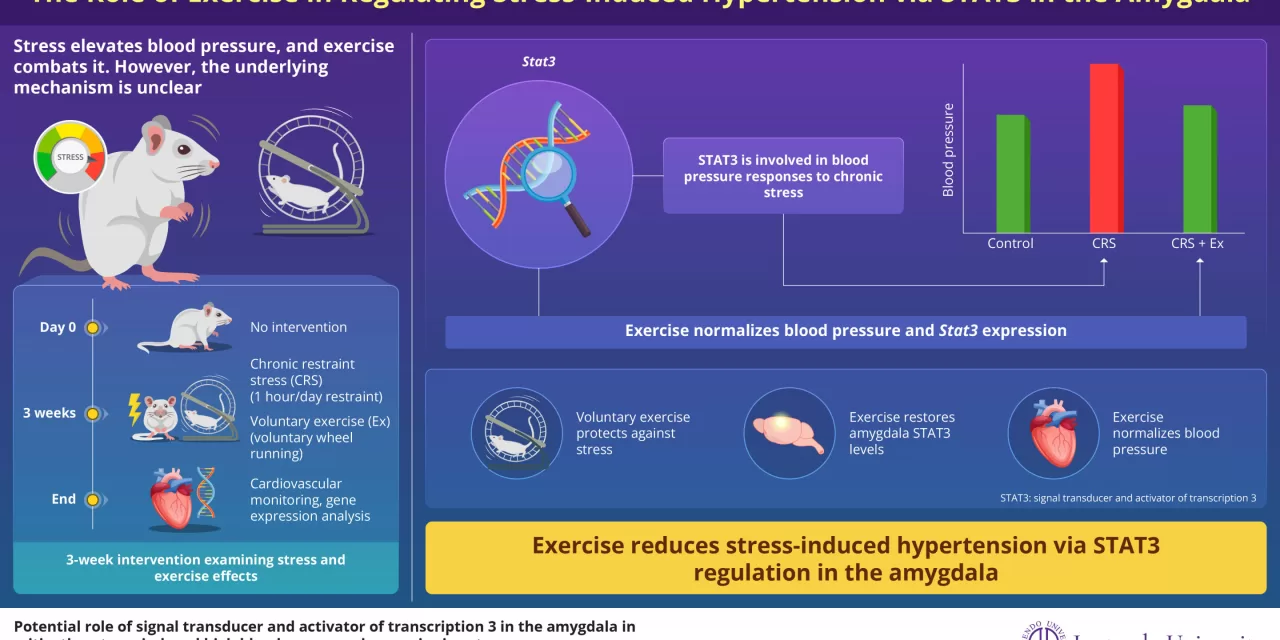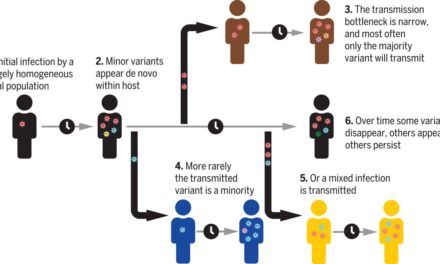Hypertension, or high blood pressure, is a leading cause of premature death worldwide. While chronic stress has long been recognized as a contributing factor, the precise biochemical mechanisms linking stress to hypertension remain poorly understood. However, a groundbreaking study from Juntendo University, Japan, has shed light on how voluntary exercise can prevent stress-induced hypertension by restoring levels of the STAT3 gene in the amygdala.
New Findings from Juntendo University
The research, led by Professor Hidefumi Waki, Dr. Keisuke Tomita, and Dr. Ko Yamanaka, was published online in the journal Acta Physiologica on January 13, 2025. Their findings indicate that exercise plays a crucial role in regulating STAT3, a gene essential for normal amygdala function. The amygdala, an almond-shaped structure in the brain, is heavily involved in emotional regulation and cardiovascular responses to stress.
“In the amygdala, the gene STAT3 is involved in the regulation of blood pressure and possibly plays a role in blood pressure elevation in response to chronic stress. It might also be involved in the improvement of stress by voluntary exercise,” explained Prof. Waki.
How Exercise Impacts Blood Pressure
To investigate the link between exercise and hypertension, the researchers conducted experiments on rats subjected to three weeks of chronic stress. Some rats were given access to voluntary wheel running, while others remained sedentary. The team then analyzed their blood pressure and conducted gene expression studies in the amygdala.
Their results were striking: stress alone caused a significant rise in blood pressure and a reduction in STAT3 expression in the amygdala. However, rats that engaged in daily voluntary exercise maintained normal blood pressure levels and exhibited restored STAT3 activity.
Further experiments revealed that blocking STAT3 expression in the amygdala—even in the absence of stress—resulted in elevated blood pressure, confirming its critical role in cardiovascular control.
“The improvement of cardiovascular dynamics after exercise is attributed to the rescue of STAT3 expression, possibly because of mechanisms such as neuroprotection and anti-inflammation,” noted Prof. Waki.
Implications for Hypertension Treatment
These findings unveil a previously unrecognized brain-based mechanism through which exercise mitigates hypertension. While regular physical activity is already recommended for heart health, this research suggests it may also serve as a non-drug therapy for stress-induced hypertension and anxiety-related disorders.
Nevertheless, the researchers caution that additional studies are required to validate these findings in human subjects. They also aim to explore whether specific exercise regimens or pharmaceutical interventions could enhance STAT3 activity in the amygdala, potentially paving the way for novel hypertension treatments.
“STAT3 plays a potential role in arterial pressure elevation in response to chronic stress and its improvement through exercise, both of which need to be clarified in future studies,” Prof. Waki concluded.
Final Thoughts
This study reinforces a powerful message: exercise benefits not just the body, but the brain as well. As researchers continue to explore the intricate connections between mental health and cardiovascular function, physical activity remains a simple yet effective tool in combating stress-induced hypertension.
Disclaimer:
This article is for informational purposes only and does not constitute medical advice. Individuals with hypertension or other health conditions should consult a healthcare professional before making any changes to their exercise routine.










